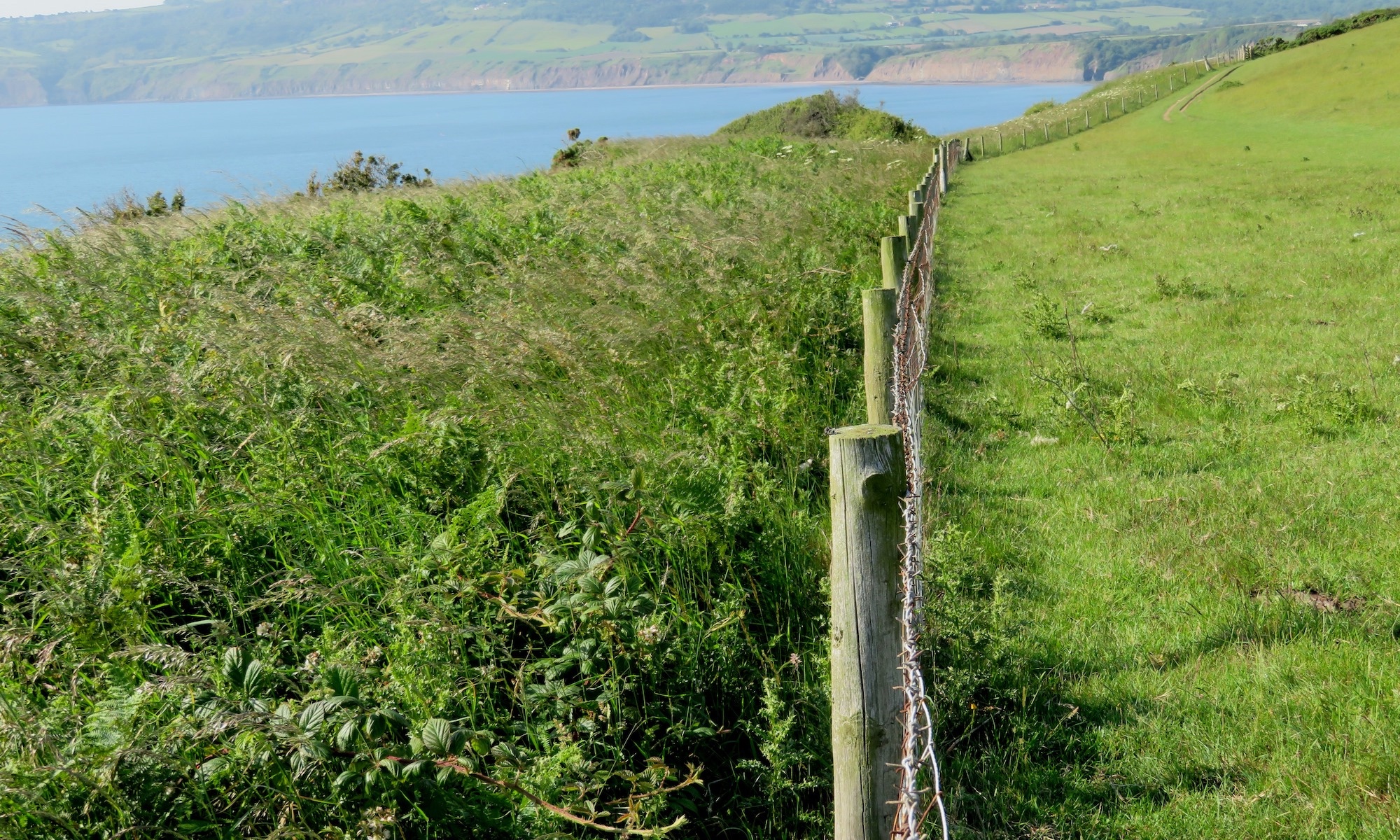by Antonia Beardsall
2nd April 2025
Antonia is a YRN committee member and is part of the ‘Hubs’ project team – the YRN initiative to create and support local rewilding networks within communities. She’s also a talented musician, a music therapist working with young people, and a member of the Wildsong Collective.
Connection is a life force; it is central to the way all living beings relate to and move through this world. In our modern lives, so very full of noise, humans often need help in finding connectedness, whether that’s connection to the world around us, to the land and the other species that inhabit it, to each other, and perhaps most importantly to ourselves – to our bodies, our instincts and our hearts.
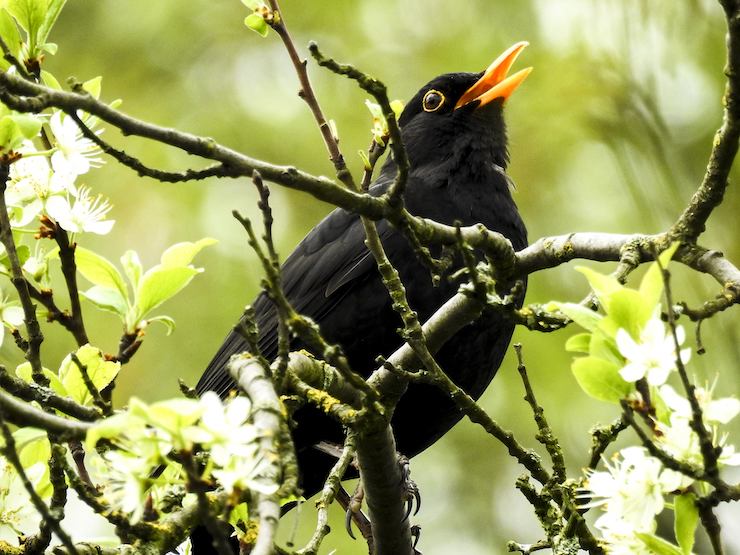
As I write this blog, a blackbird has landed on a branch outside the window and begun to sing, offering me an invitation to connect with the world outside, and through listening, connect with another part of me. The importance of ‘nature connection’ became starkly evident during Covid and has rightly been at the centre of much discourse, locally and globally, including discussions around access to natural spaces. As a city, Leeds is lucky to have a considerable number of beautiful, spacious parks and green spaces. Yet some residents still feel that while these spaces are closely managed and curated, it is difficult to have a felt sense of a natural world that is truly thriving and connected.
The North Leeds Rewilding Hub is bringing together communities of people who are seeking a new baseline, both in our urban spaces and beyond. This work has invited the Hubs team to think creatively around inspiring more diverse groups of individuals, neighbours and community leaders to join rewilding efforts. As rewilding gains momentum, it’s vital that everyone feels included and connected.
I’ve been inspired by Rob Hopkin’s work after reading his book From What Is to What If; Unleashing the Power of Imagination to Create the Future We Want. His belief is that play, creativity and imagination are essential tools for us as humans, affording us the courage to move away from what we know and to embrace new systems of change. Collective guided imaginings have played a key role in his work with Transition Town Totnes, replacing the fear and anxiety of the capitalist paradigm with curiosity instead. It felt as though this would be an important component in galvanising communities around rewilding, particularly at our core venue for the North Leeds Hub, Headingley Enterprise and Arts Centre (HEART).
As a musician, the use of playfulness and creativity to inspire change resonates with me. Music has been used for centuries to uplift, move and bring people together in community. In music we can play, create and explore distant and even unfamiliar worlds and soundscapes. Beyond that, improvised music, particularly collaborative improvisation, demands a presence and a quality of listening that can ignite potent connection between those involved, and even for those witnessing. We all have an innate ability to relate to and connect through music, primarily due to the fact we are made of music; as we breathe, move and communicate, we use a range of musical components such as pitch, dynamics, rhythm and texture. This is, of course, also true of the natural world, of which we are part. Such rich and diverse sound worlds can be found in our wilder spaces.
I’ve been curious about exploring rewilding through improvised music, and their parallels; both offer experiences of the unknown that can feel at once uncomfortable and exciting, and unexpected interactions that can equally evoke many different emotions within us. Mirroring the complexity of the natural world, music can hold multiple qualities at the same time – messiness and even chaos within structure, a multitude of pitches sounded at once while all can still be individually heard, space and silence within sound. In the same way that rewilding demands that we have faith as we step back and let the natural world take the lead in the process of restoration, there is an element of ‘letting go’ in musical improvisation, trusting that the flow will carry you. Perhaps, then, to the human eye and ear, rewilding is like the deep time, en masse improvised music of the natural world?
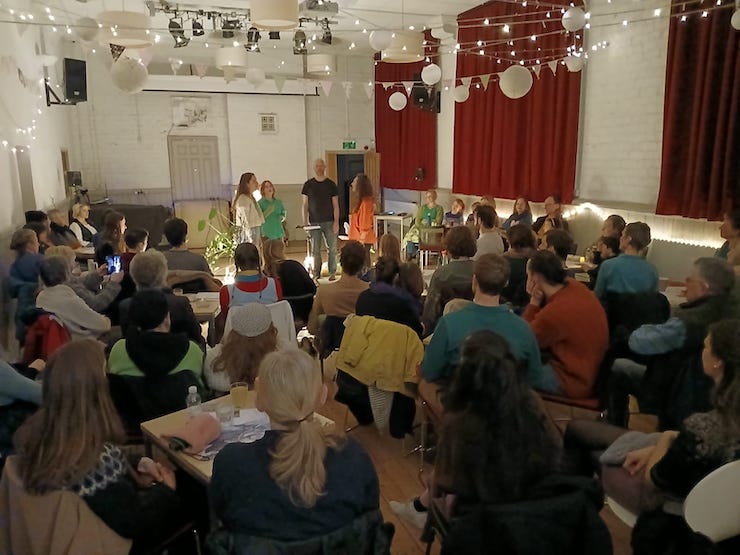
And so it was one evening early in March 2025 that we gathered at HEART community centre, in the bustling hall adorned with twinkling fairy lights and plants, for an immersive, improvised performance with the Wildsong Collective. The birds that inhabit Marton Wood also joined us via field recordings, singing as people wandered in and throughout the vocal improvisations. The evening was a celebration of what could be, awakening hearts by sounding people’s stories of their beloved wild places, before bringing to life musically what a rewilded Leeds could feel like. The audience were invited to offer the singers a word or picture from suggestions laid out on their tables to be sung, conjuring a three-piece-suite of ‘mess…thrive…stork!’. As one of the singers, I felt a palpable sense of community, everyone working together to translate these somewhat abstract rewilding-related words to music; in particular I recall someone suggesting the percussive ‘clattering’ sound of a stork’s beak! The evening ended with an invitation to join in song, a final act of togetherness before parting ways.
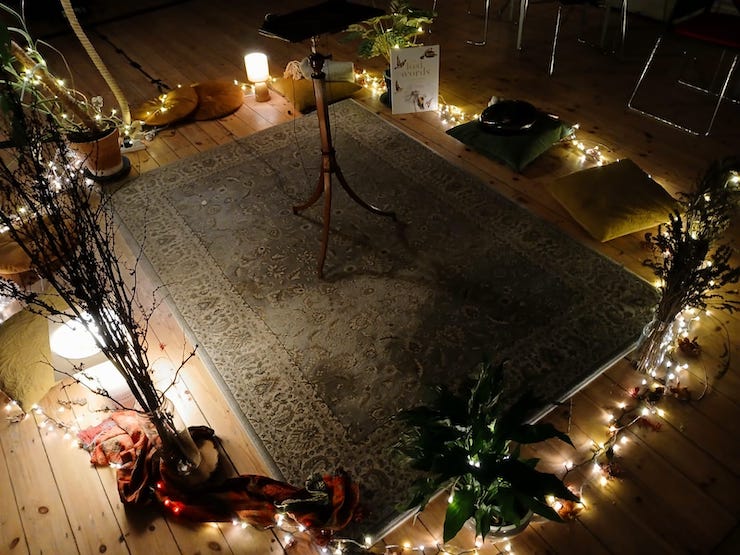

Perhaps my most cherished memory from the evening occurred when we requested stories of everyone’s favourite wild places. Following a pause for everyone to reflect with their table, a young person shared with us all her love of Weston Woods near Otley, describing the beautiful trees and the people who enjoy them. This was then sounded back to her as a vocal journey through the wood, witnessed by everyone else – a communal appreciation of this young person and a space that gives her joy and a sense of being ‘wild’. I believe experiences such as this, of feeling heard and valued as a young person within community, will be increasingly important as younger generations navigate the world in times to come.
We invited people to leave reflections, written on small pieces of paper hung on a branch in the hall. These responses affirm to me the potential for the use of the arts in response to global crises, not only as a way to create momentum but also to nurture, to tend and connect to the parts of ourselves that are dreaming and working for change. As one person put it, ‘Keep doing this, I love it and we all need it.’ Words such as ‘hopeful’, ‘inspiring’, ‘uplifting’ and ‘moving’ appeared multiple times. Someone spoke to the ‘beautiful community’ and someone else liked the ‘rawness’. Other reflections anticipated a lasting impact, such as ‘I found it moving and inspiring… it will stay with me’, and even ‘…it made me feel part of the world and earth again’. Connection, in different guises, was mentioned by several people. For one person the evening was a ‘brilliant way of connecting back with nature’. Another, who ‘loved…the flow and connection’ referred more to the interconnectedness within the room, and someone else found it ‘enriching to connect with innate creativity – [it] warms the soul’. Others referred to a shift in a felt sense they experienced: ‘I feel different inside,’ and ‘when I arrived I had no idea about rewilding except in my head. You gave me what the experience of what rewilding really is.’ Lastly, I was interested to read someone’s response to the silence that came before each improvisation as we, the singers, thought and felt into what was to come: ‘Creating a feeling, a different energy – the silence was palpable before, pure beauty in the harmonies…joy’. The silence, that pause, reminds me of what is needed for us to be able listen to what the earth is asking of us.
People are at the heart of rewilding. Our invitation is to pause, listen, and practise being playful and curious about what could be. This needs to happen before we move into the ‘doing’ part, where we give a helping hand to kickstart the natural regeneration where needed. I would argue it needs to be a continuous practice! It can only be done together, connected and in community.
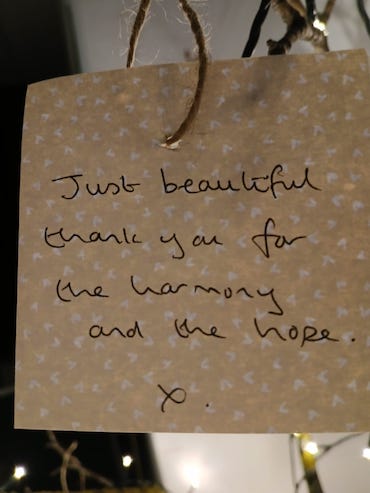
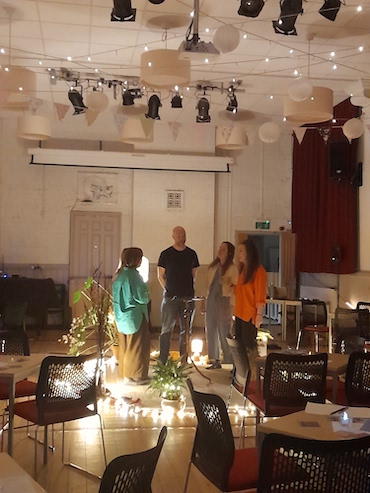

Useful links:
- For more information about the YRN Hubs project see Sammy Mennell’s blog ‘Local Rewilding Hubs’
- If you live in the area and want to be part of the North Leeds Rewilding Hub please email YRN at info@yorkshirerewildingnetwork.org.uk and we’ll put you in touch.
- If you’re interested in learning more about the Wildsong Collective, follow them on Instagram or email any questions to wildsongcollective@gmail.com
[Image Credits: Claire Blindell, Lynn Brown, Wikipedia Commons – Kathy Büscher]
